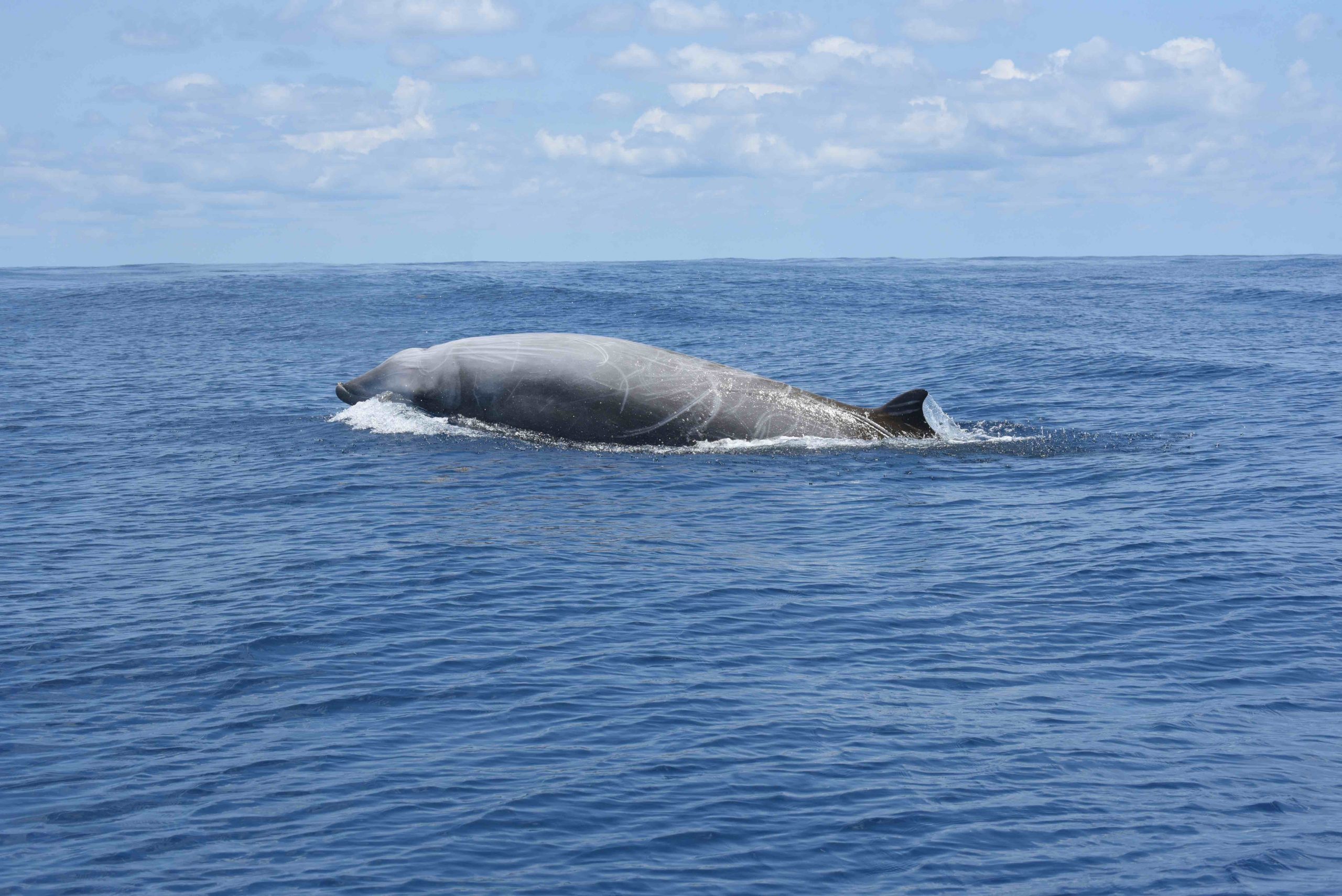After a long wait for good weather and engine repairs to the R/V Richard T. Barber, we were very excited to kick off the first round of tag deployments for the 2021 Atlantic Behavioral Response Study (BRS). It felt great to be back in the field and we made the most of some wonderful offshore weather over the past couple of weeks.

Our task was to deploy satellite-linked dive recorders on Cuvier’s beaked whales (Ziphius cavirostris) prior to a planned Controlled Exposure Experiment (CEE) with a Navy vessel on July 15th. The tags collect information on the diving behavior of the whales and transmit data summaries to ARGOS receivers placed on NOAA weather satellites.
We use these observations to build a record of the baseline behavior of each whale before the experiment, including their horizontal movements and diving records. From our work supported by NAVFAC over the past few years, we have built one of the most extensive records of the behavior of this species anywhere in the world.

In three excellent field days we were able to deploy 10 tags on Cuvier’s beaked whales off Cape Hatteras. Our success reflects the very high density of these elusive whales in this area and an extremely experienced and talented field team. We also require excellent weather conditions, as we deploy the tags remotely using an air rifle. Calm seas are absolutely necessary to find the whales and deploy tags.

We saw lots of familiar whales, including several that we tagged in previous years – it was good to see so many old friends. We also saw quite a few female whales accompanied by dependent calves, something that is quite rare for our study area. Among these moms was a very distinctive female with what appeared to be scars from a shark attack on her right flank. Her newborn calf had also been attacked but survived.

We feel very lucky to be able to work with such wonderfully strange and enigmatic animals in such a beautiful location. We work about 40 miles from shore, in the azure waters of the Gulf Stream, where we are often the only boat for miles, surrounded by pelagic seabirds, dolphins and whales. It is a remarkable place.

So, all is in place for next week’s CEE – stay tuned for the next update.





